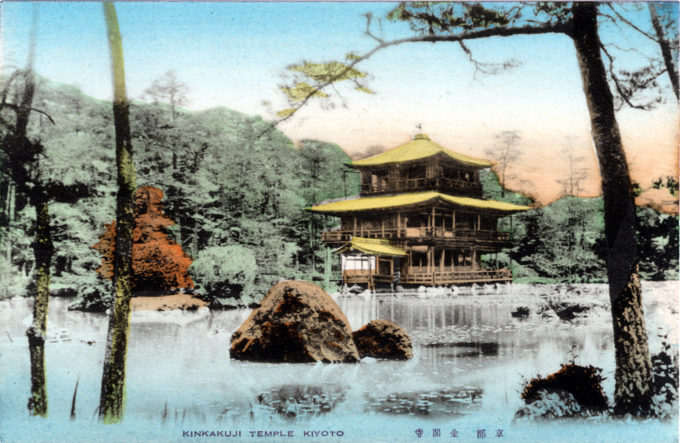“The Golden Pavilion (kinkaku) and the temple (ji) — the latter the property of the Zen sect of Buddhists — owe their origin to the 3rd Ashikaga shogun, Yoshimitsu, who, upon his cession (in 1395) of the shogunate to his son Yoshimochi, retired to a small estate belonging to Saionji (a court noble) and there built for himself a retreat from which he continued, though nominally a Buddhist monk, to direct the affairs of State. After his death in 1408 his dwelling was converted into a temple called Rokuon-ji; of this group of edifices the only remaining one is the pavilion.
“Though it lacks great dignity and impressiveness, its graceful diminuitiveness and its delicacy of design — particularly when compared with the ponderous temples which rise in other quarters of the old capital — are pleasing. The adorable little garden in which the pavilion stands is thought by some to rival in beauty and charm the fine Imperial summer gardens of Katsura, and the Shugaku-in. Both the structure and its delightful environment are expressive of the unquestioned taste of the great statesman who brought them into being.
“When by ceaseless labor and tact he had elevated the shogunate to a hitherto undreamed-of plane of wealth and power (a fabric which his grandson Yoshimasa succeeded in demolishing) and had skillfully secured the succession to the Ashikaga, he retired hither to delight in the society of poets, painters, and the learned bonzes whom he had always favored and who revered him as their indulgent master.”
– Terry’s Japanese Empire, T. Philip Terry, 1914
Kinkaku-ji Temple, Kyoto, c. 1920.
1920s • Architecture • Arts & Culture • Kyoto-Nara
Tagged with: Buddhist temples, Kinkau-ji Temple, Kyoto, Tourism, Zen Buddhism
Please support this site. Consider clicking an ad from time to time. Thank you!



